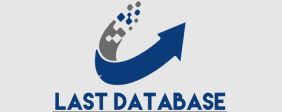Many marketers think that simply having a great product or service will automatically attract potential customers, but this is exactly the mistake they usually make!
The reality is that proactive lead generation strategies
are essential to consistently generating impact and interest assessment: innovations in ukrainian law enforcement practice leads and driving conversions. They also increase brand awareness, ultimately earning trust and loyalty.
Whether you’re targeting the B2B or B2C space, you’ll need a variety of strategies to continually attract new customers. In short – without leads, it’s hard to grow your business or get a better ROI.
In this guide, we’ll show you how to implement 12 proven lead generation strategies so you can increase your conversion rates and generate more sales.
Lead Generation Statistics and Fun Facts
If you’re not convinced that lead generation kherson region: threatening trends and challenges is important, check out these few lead generation statistics that might change your mind:
- Less than a quarter of businesses are satisfied with the number of leads they generate.
- Spending just six hours a week on social media can boost lead generation.
- More than 50% of marketers spend at least half of their marketing budget on lead generation.
- Less than 20% of companies report obtaining high-quality leads from outbound marketing strategies.
- 70% of marketers report that they have made lead generation a top priority.
As you can see, lead generation has become whatsapp database brazil one of the most important parts of growing a healthy business. But how do you do it? Let’s define some terms, then dive into our 12 proven lead generation strategies.
What is Lead Generation in Marketing?
Lead generation can be thought of as the missing link between marketing and sales. It refers to the process of attracting potential customers to your business and increasing their interest through nurturing.
However, not every inquiry is considered a lead. A qualified lead is someone who is willing and able to purchase your product or service.
For example, if you’re targeting enterprise-level businesses, you don’t want to attract prospects who own small businesses. They’re not in your target market.
Generally speaking, potential customers can be divided into three types based on their position in the sales funnel:
- Top of the funnel leads : These are at the initial stage of the buying process. They are starting to look for solutions to their problems. For example, someone who just followed your brand on social media.
- Middle-funnel leads : When people are in the consideration stage, they typically know their problem and are actively searching and comparing solutions. For example, a visitor who registers for a webinar.
- Bottom of the Funnel Leads : Prospects have finally reached the decision stage and are ready to buy. They are well aware of their options and see you as a solution. For example, a lead who signed up for a free trial.
In marketing, lead generation refers to the act of obtaining information from consumers that can further the relationship between a business and the consumer. Leads can be opt-in email subscribers, sales leads, or followers on social media.

